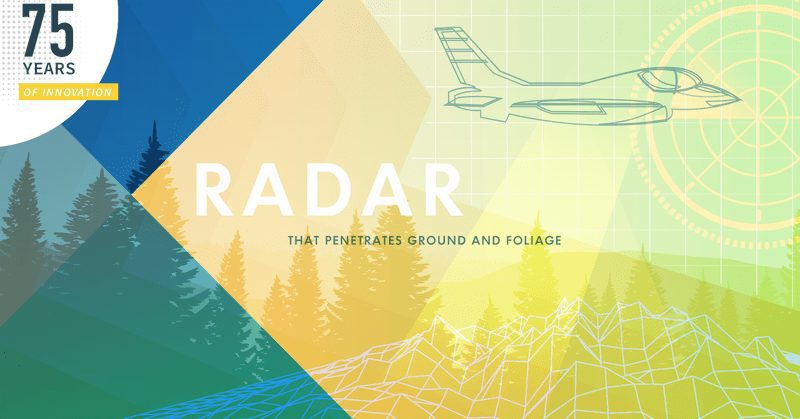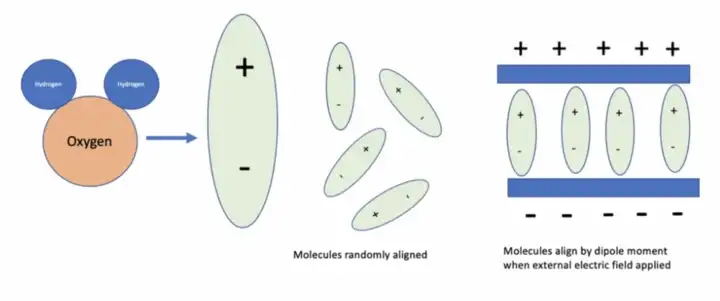Ground-breaking innovation around application of Foliage-Penetrating Radar Technologies.
The 75 Years of Innovation series highlights the groundbreaking innovations spanning from SRI’s founding in 1946 to today. Each week, SRI will release an innovation, leading up to its 75th anniversary in November 2021.

How foliage-penetrating radar technologies cut through the camouflage
“Radar could detect both surface and buried metallic and nonmetallic targets not only in the roadway, but also through foliage such as tall grass or other ground cover, in all weather, and in the presence of smoke, mist, or other obscurants.” Institute for Defense Analyses, 1999
Science is amazing. When humans use science to explore the natural world, our imagination is opened up. Foliage-Penetrating Radar technologies (FOLPEN) is a case in point. FOLPEN is based on a natural phenomenon, that coupled with the insight and vision of the folks at SRI International, created a ‘ground-breaking’ or ‘foliage-breaking’ technology.
Foliage-Penetrating Radar as a technology was advanced by SRI in the 1990s. SRI took a well-understood natural phenomenon and used it to help protect military operations and save lives.
How to see the wood for the trees?
Foliage-Penetrating Radar technologies are all about frequencies. Think of it as this…people and foliage respond differently if an electric field is applied. This is because of something called “permittivity”. This is a term in electromagnetics that describes (by way of a constant) the polarization of a material. For example, thinking of water, a molecule of water is made of atoms of hydrogen and oxygen. The two types of atom are oppositely charged: oxygen being positive and hydrogen negative. This forms a ‘dipole’ of the two charges, in other words, the atoms ‘polarize’ (sort of like a magnet). Humans and plants are made up of materials that have dipoles. Normally, the molecular dipoles are randomly arranged. However, if you apply an electric field to the material (such as a leaf) the dipoles line up, the charges being attracted to the opposite charge of the field — or in other words the molecules ‘oppose’ the electric field. The amount the molecules ‘oppose’, reflects the net electric field and determines the permittivity. Each material has a different permittivity — this is key in differentiating different objects.
Foliage-Penetrating Radar uses pulsed microwaves to create the electric field. The difference in permittivity allows the Foliage-Penetrating Radar to differentiate materials and make the seemingly hidden, visible. The change in permittivity causes reflection/refraction/scattering of the microwave signal and the change in the reflected signal is picked up and converted to a display showing any objects of interest.

Why do we need foliage-penetrating radar technologies?
Organizations such as DARPA looked at developing foliage penetration during the Vietnam conflict; insurgent soldiers using the dense tropical forests to hide in. Innovations in foliage penetration required not just the technical capability but a method of directing the radar. Several innovations provided the coherent waveforms and signal processing as well as the radar installations in key locations. In addition, FOLPEN “Synthetic Aperture Radar” or SAR was developed. This provided the availability to discern man-made objects from the background. SRI led the way in developing the technology for in-the-field use by the military and others.
SRI enhanced the capabilities of FOLPEN by developing the ‘FOLPEN Radar’ SAR aircraft that could fly above an area of interest. Two innovative airborne FOLPEN radar devices were developed by SRI:
FOLPEN II: Used to differentiate against foliage types and for land mine reconnaissance. However, this first-generation system was limited to a resolution of 1-meter.
FOLPEN III: SRI continued to develop the capability of FOLPEN II to accommodate wider area coverage and offer greater target discrimination. This came in the form of a two-channel polarimetric system that alternated between a horizontal and vertical polarization plane.
Continued research by SRI included Very High Frequency (VHF) SAR imaging and the use of noise-reduction algorithms. This led to high-resolution SAR that could be used for the accurate topographical analysis of ground hidden by foliage.
FOLPEN for homeland security and the military is used in the detection of:
· Soldiers that are hidden under deep foliage
· Hidden metal objects, such as mines. It is also used for improving the safety of humanitarian de-miners
· Army vehicles moving in deep foliage
In civilian situations, FOLPEN is used for unexploded ordnance and other concealed items of interest.
SRI continues to weave technologies together to explore innovation. The ground-breaking work on Foliage-Penetrating Radar that SRI made in the 1990s continues today. Enhancements using other SRI technologies such as sensor technologies, processing algorithms, and analytical tools, continue to evolve the capabilities of the underlying science.
Thanks to SRI International and the electrical charge of atoms, we can now find that proverbial needle in a haystack (or even a hidden mine in amongst dense foliage).
Resources
Mark. E. Davis, Foliage Penetration Radar Detection and Characterization of Objects Under Trees, Scitech Publishing 2011: ISBN: 978–1–891121–00–5
Institute for Defense Analyses, Research of Ground-Penetrating Radar for Detection of Mines and Unexploded Ordnance: Current Status and Research Strategy, 1999: https://apps.dtic.mil/dtic/tr/fulltext/u2/a374029.pdf
Vick, A., et.al., Enhancing airpower’s contribution against light infantry targets, RAND publishing, 1996: ISBN: 0833023896
Carin, L., Felsen, L.B., Ultra-Wideband, Short-Pulse Electromagnetics, Springer Science & Business Media, 2013: ISBN 1489913947


